Simple Ways to Improve Transparency and Earn Shoppers’ Trust
You must be upfront about your product at every stage of the customer journey. Learn how clear, concise policies can help you go beyond just selling to create loyal customers.
 Product Page Guide
Product Page Guide
You must be upfront about your product at every stage of the customer journey. Learn how clear, concise policies can help you go beyond just selling to create loyal customers.
eCommerce brands are facing stiff competition right now, and earning consumer trust is an important piece of acquiring new customers. This is especially true when it comes to big-ticket items, like furniture and appliances.
Transparency can help brands boost customer trust when buying online. In this chapter, we’ll discuss how having clear, concise policies can help you to go beyond just selling, and instead create loyal customers and brand advocates.
Consumers have more options than ever when it comes to eCommerce, and that has led to increased expectations. Consider these statistics from Sprout Social:
But there’s a disconnect. Research from Edelman shows that only 34% of consumers trust most of the brands they buy or use. That means businesses are falling short on meeting those expectations, and that means an opportunity for those who are willing to invest in transparency.
For online brands, transparency means being upfront about your product or service at every stage of the customer journey. Consumers don’t like surprises when making purchase decisions, and giving important information too late in the process can lead to abandoned carts and a negative perception of the company.
There are three main areas where eCommerce brands need to focus on transparency:
If an item is out of stock, customers need to know that before it’s added to their cart or worse, place an order. Any availability issues should be clearly outlined on the product page, with an offer to be notified when the product is available again.
The more transparency you can have around items like taxes, shipping and handling fees, and promotions up front, the better your chances to convert. If you have a minimum order for free shipping, clearly state it on your product page so customers aren’t surprised by hefty shipping fees when they get to checkout.
In the age of Amazon Prime, consumers want to know when they are going to receive their items before they buy. As a brand, that may be hard to determine as COVID-19 has congested delivery chains. Be upfront with customers about the fact that items may arrive late, but do let them know when you expect them to ship.
Building brand trust means being transparent about your business practices. Consumers today want to support brands that share their values, and the more open, honest, and authentic you can be when doing business, the deeper your relationship with your customers.
The online mattress marketplace is a crowded one, and when it comes to asking customers to make such a big-ticket purchase without seeing and experiencing the product in-person, it’s imperative to build trust. At GhostBed, we rely on high quality products and transparency to acquire new customers, and to turn our existing ones into loyal brand advocates.
By providing clear, trustworthy information at every stage of the customer journey, we are able to overcome the challenges of selling a high price item in a saturated market.
Here are nine touchpoints on our product pages that built trust.
A study from Baynard Institute found that almost 20% of customers abandoned carts because they didn’t trust the site with their credit card information. The more you can promote safety and security on your product pages, the better you’ll be able to establish that trust.
At GhostBed, we display trust badges below the CTA on product pages, highlighting the fact that our purchases are protected by a Norton Shopping Guarantee. We also have badges on our product pages highlighting specific product and brand attributes that boost trust: our sleep trial, warranty, free shipping, and commitment to making our products in the United States.
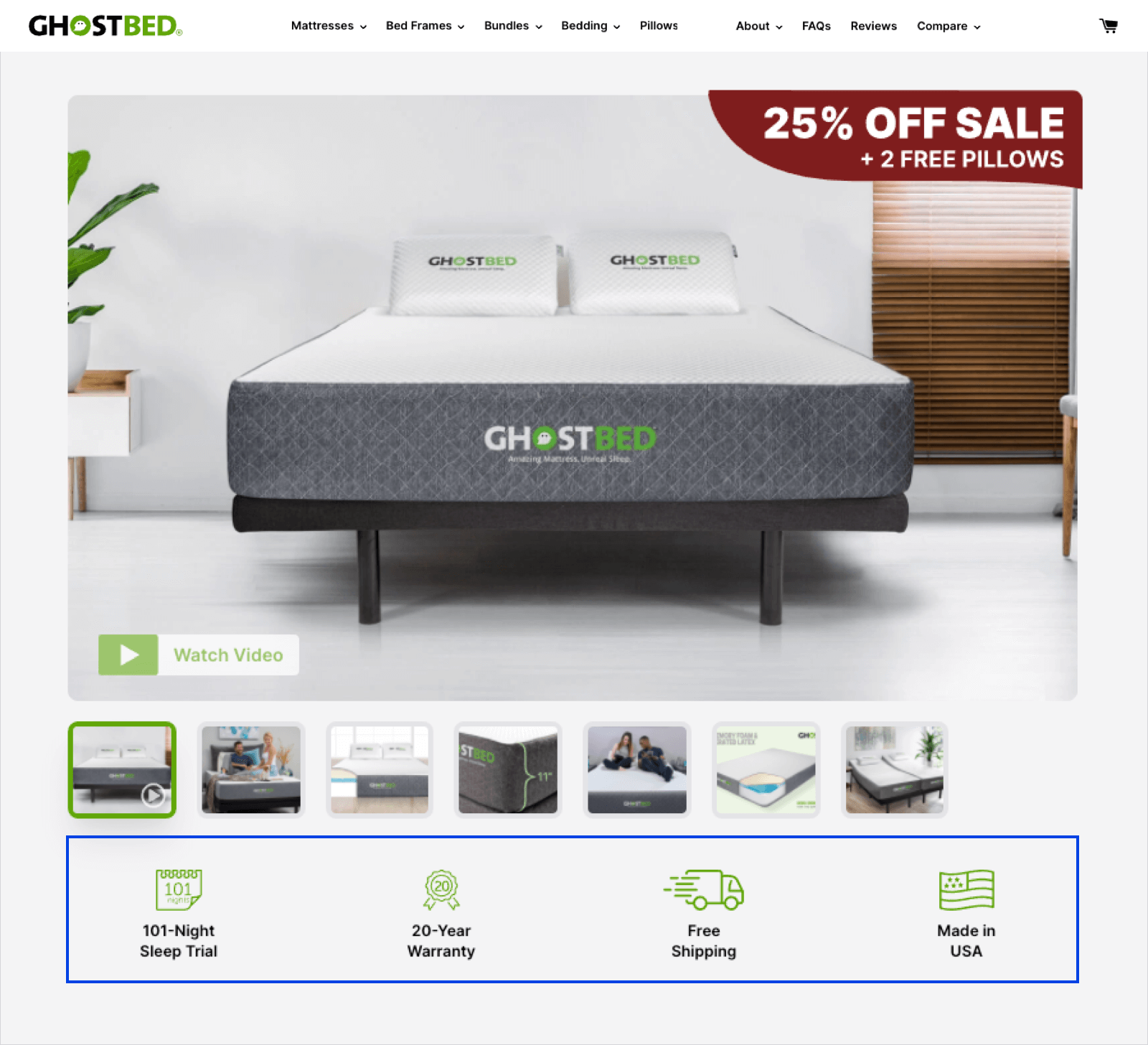
Customers want to quickly get all of the necessary information about a product that will inform their decision. While long, flowery descriptions may make for great reading, a concise description highlighting specs, features, and product benefits will help move them along the sales funnel more quickly. (For more tips, read our chapter about writing killer product copy.)
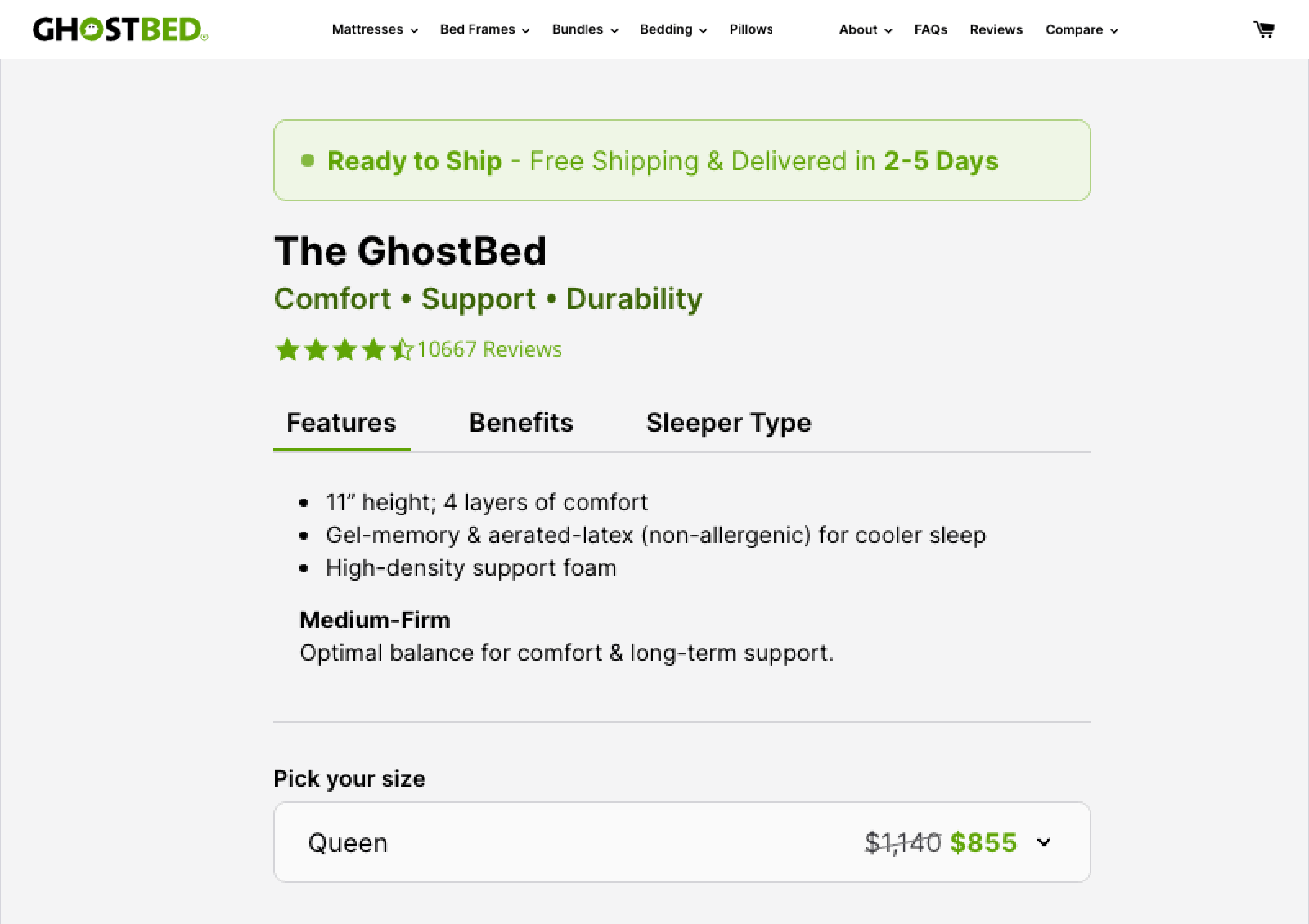
The GhostBed may not be the right bed for every consumer who visits our site, and that’s okay. Being clear about the fact that our mattress is medium-firm helps set customer expectations. It’s better to have a customer not purchase because your product isn’t the right one for them than to have them spend a lot of money and be dissatisfied.
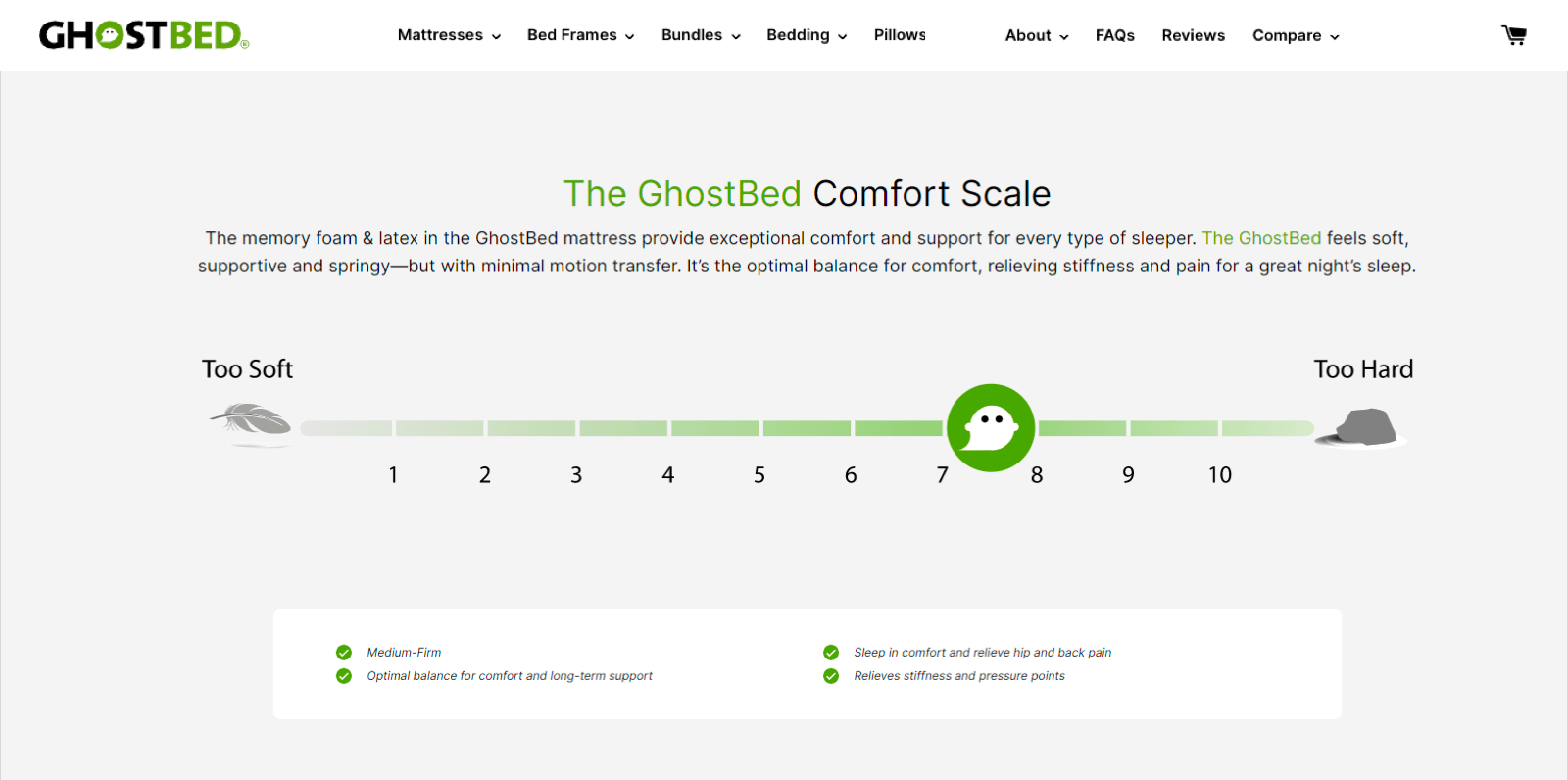
If your product has won awards, say it loud and proud on your product pages. Knowing that your product is considered the best of the best will help boost trust and set your product apart from the competition.

Having an FAQ easily accessible from — or better yet, incorporated into — your product pages will go a long way toward addressing any questions or concerns a customer may have about taking the next step in the path to purchase. The more you can inform them, the more likely they are to trust you enough to buy.
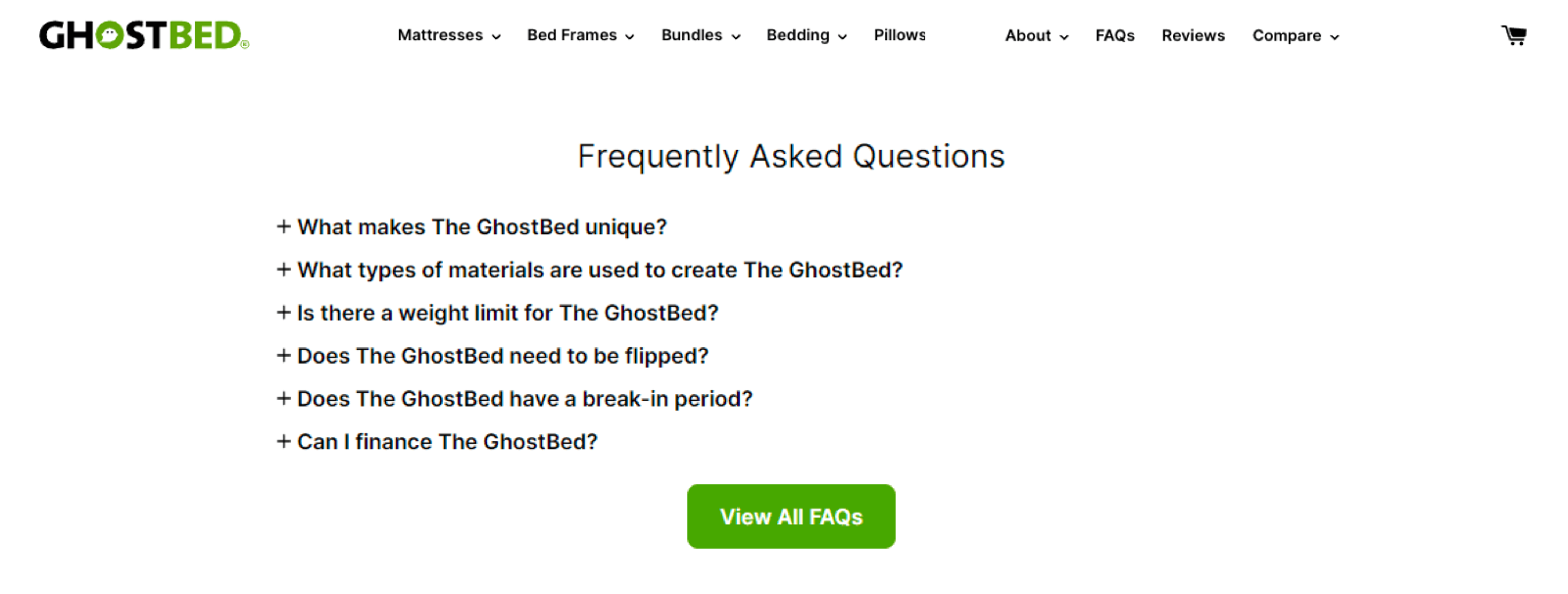
Surprises about shipping and returns can cause cart abandonment or worse, unhappy customers whose expectations weren’t met. Being transparent about when items will ship and your store’s return policy will help consumers make informed decisions.
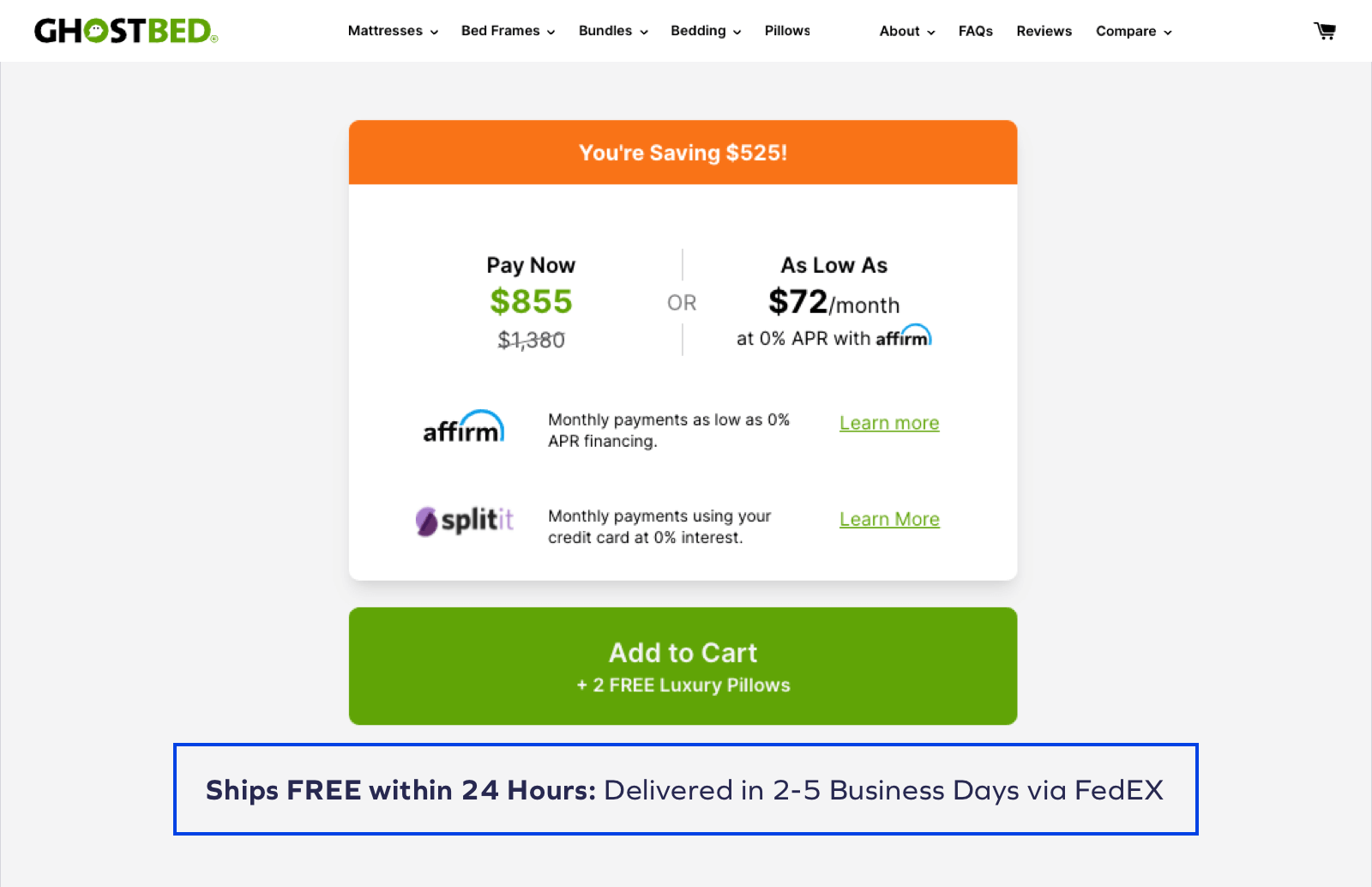
In addition to offering return policy information, it’s also important to advertise any “trial” periods you might offer; for big ticket items, this alleviates concerns about buying an item that you feel differently about in a few weeks’ time.
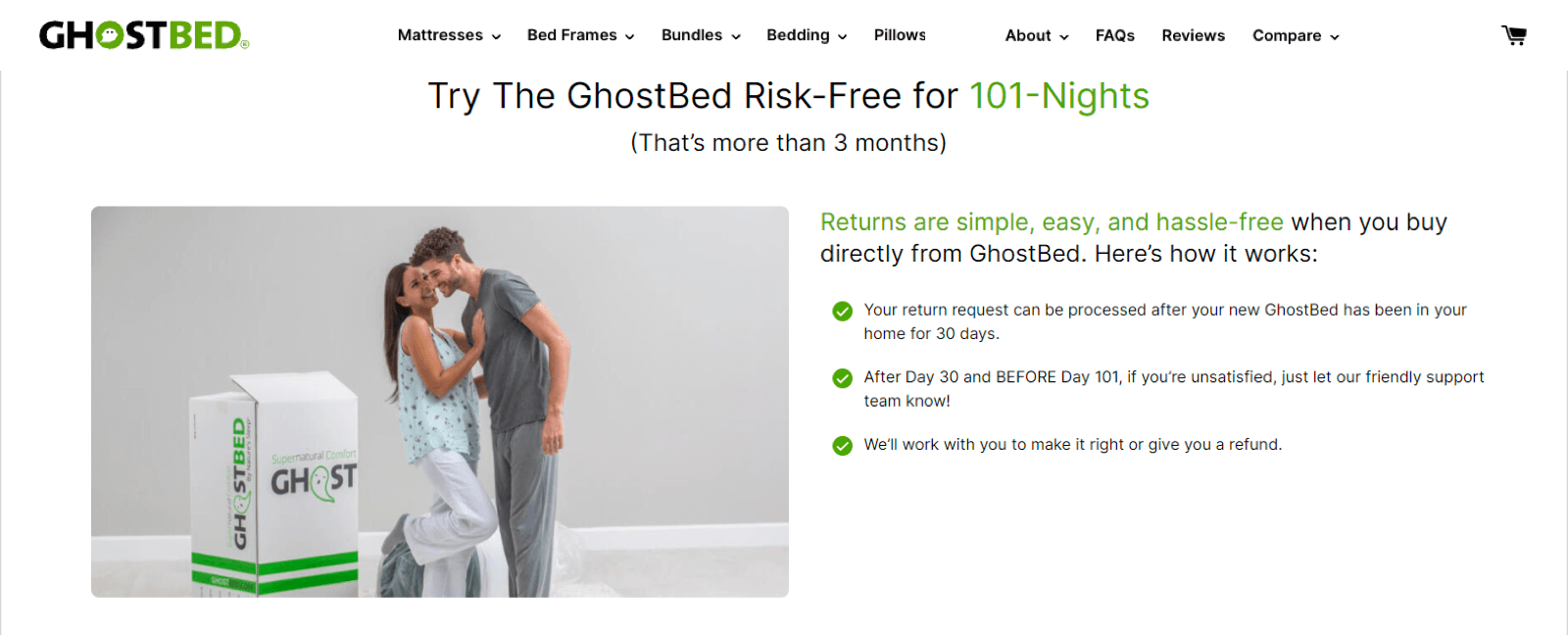
Aggregated star ratings at the top of your product pages show your customers that your item is a bestseller, and reviews offer social proof. The ability to filter and search reviews to find out what other customers have to say about different aspects of the product is vital, especially if you have a large volume of reviews. (To learn more about using social proof, read our chapter about enhancing credibility with authentic reviews.)
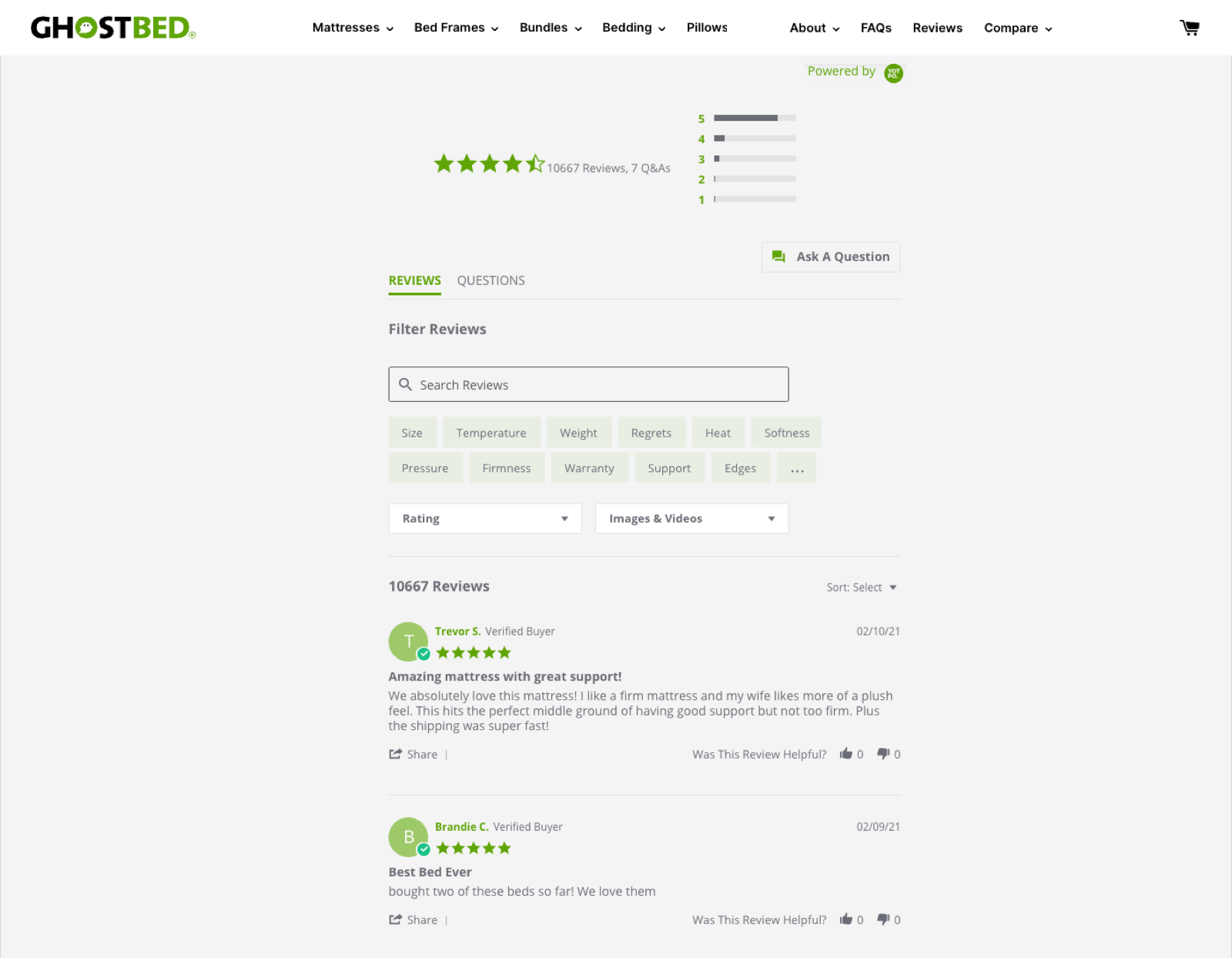
Adding another layer to social proof with testimonials is a great way to boost brand trust. On our product page, we do it with industry experts and featured reviews.

At GhostBed, we’ve built a brand that customers can trust, by focusing on transparency. This has allowed us to set ourselves apart in a crowded marketplace, and build an engaged and loyal customer base of brand advocates. And it’s increasingly important for all eCommerce brands to consider.
